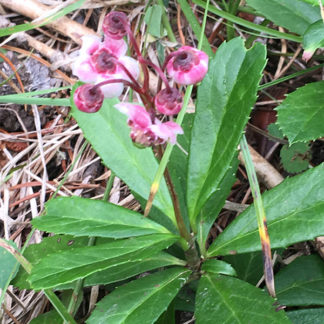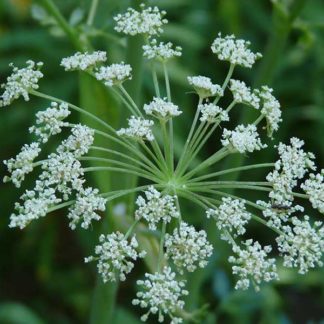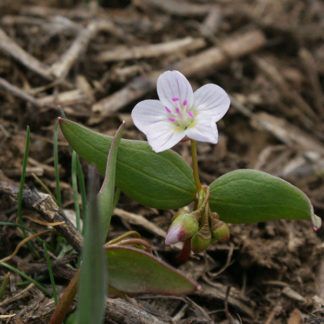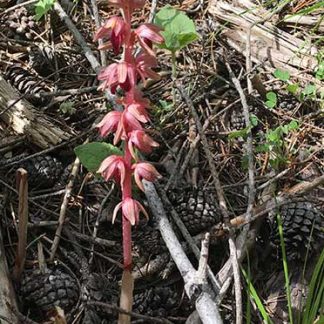clonal
Showing 25–36 of 136 results
-

Castilleja spp. / two yellow paintbrushes
- look like Indian paintbrushes (which they are), but yellow
- inflorescence bracts possibly lobed
- height ranges from less than 8" to about 15"
- subalpine, alpine and tundra habitats, in clumps or spread out
- linear leaves without lobes, 3 prominent veins
- red to maroon, hairy stems
-

Chamerion angustifolium / fireweed
- bright pink flowers on tall inflorescence (raceme)
- flowers mature from bottom to top
- four petals
- spiral leaf arrangement - lance-shaped leaves have smooth edges
- pod-like seed capsule releases seeds to the wind
-

Chimaphila umbellata / pipsissewa
- small herb/forb
- shiny, toothed lance point leaves
- half-inch, pink and white, upside down flowers
- flowers in umbel like cluster
- flowers with minimally visible style
-

Cicuta douglasii / water hemlock
- HIGHLY TOXIC
- primarily on continuously wet soils, e.g. ditches, stream banks, pond margins, marshes.
- white compound umbel inflorescence typical of the Apiaceae/Umbelliferae
- multiply compound leaves with prominent veins ending in notches between lobes
-

Cirsium arvense / Canada thistle
- purple or lavender clearly-thistle flower heads
- multiple small flower heads per stem
- deeply lobed, spiny leaves, but stems not spiny
- clonal and perennial
- in clumps or along roads, sometimes quite large/long
-

Claytonia lanceolata / lanceleaf spring beauty
- small, very early spring, ephemeral
- 5 white or pink-ish petals with pink/purple stripes
- pair of opposite leaves at mid-stem; lanceolate
-

Comandra umbellata / bastard toadflax
- teeny, funnel-shaped white-ish flowers in clusters
- small plants, thick-ish, pointy stem leaves; more oval basal leaves
- clonal - may colonize large areas
-

Convulvulus arvensis / field bindweed
- prostrate and twining vine with white "morning-glory" flowers
- may be so dense as to choke out other plants
- roadsides, agricultural fields, waste areas
- "noxious" in Idaho
-

Corallorhiza maculata / spotted coralroot
- short, brown/red leafless flowering stalk, often in clumps
- intricate all brown/red-ish flowers except for a white lower lip, with reddish spots
- in conifer or aspen forest understory
-

Corallorhiza striata / striped coralroot
- short and purple - no green bits
- forest understory
- up to 35 flowers per stalk; often many stalks together
- flowers have 5 pointy, purple striped "petals" and one darker lower lip petal
-

Corallorhiza wisteriana / spring coralroot
- small, easily missed in the forest duff
- no leaves, no green parts
- flowers have white lips, possible spots, no eared tabs
- scape (flowering stalk) purple, or yellow, or brown
- may stay dormant for years at a time
-

Cornus sericea / red osier dogwood
- shrub with opposite branching and red bark, brightest in fall/winter
- common along streams especially
- small white flowers, 4 petals, in clusters
- white or blue-ish white berries in fall
- opposite leaves with parallel veins
Showing 25–36 of 136 results